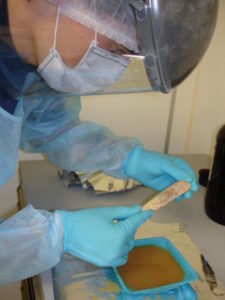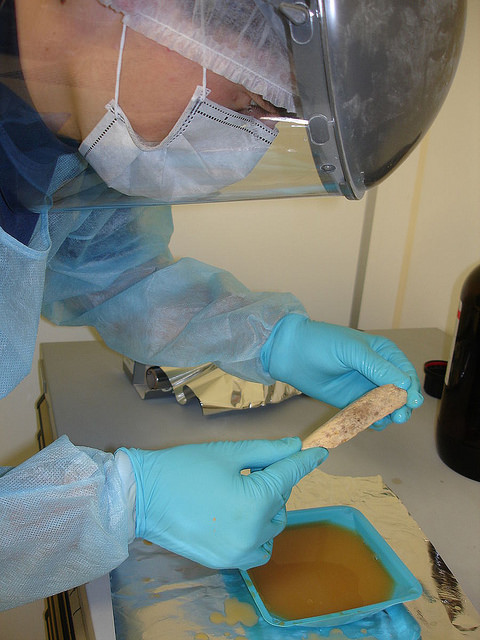
Accurate estimation of the ages of ancient human specimens is crucial for interpreting ancient DNA analyses. Though radiocarbon dating, a standard tool for estimating the ages of specimens, is remarkably precise, it can be biased by contamination. Priya Moorjani and colleagues developed a complementary approach for dating ancient genomes by comparing the cumulative numbers of genetic recombination events between ancient and present-day non-Africans since the time of Neanderthal introgression into their common ancestors. Most non-Africans have around 2% Neanderthal ancestry resulting from human and Neanderthal interbreeding that occurred around 50,000 years ago. Assuming an approximately constant recombination rate per generation, the amount of recombination that has occurred since the initial introduction of Neanderthal DNA can be used as a molecular clock to infer the number of missing generations between an ancient genome and present-day genomes. The authors tested their method on five ancient human specimens from North America, Europe, and Siberia with sequenced genomes and radiocarbon dates between 12,000 and 45,000 years ago and obtained age estimates that were consistent with radiocarbon dates. Using correlation between radiocarbon dates, measured in years, and Neanderthal introgression dates, measured in generations, the authors estimated the historic generation interval to be approximately 28 years per generation. According to the authors, the estimate is consistent with those for present-day West Eurasians.
_________________________________________
Working in a clean room, researchers at the Max Planck Institute for Evolutionary Anthropology in Leipzig, Germany, took extensive precautions to avoid contaminating Neanderthal DNA samples – extracted from bones like this one – with DNA from any other source, including modern humans. NHGRI researchers are part of the international team that sequenced the genome of the Neanderthal, Homo neanderthalensis.
_________________________________________
The study report* is published in the Proceedings of the National Academy of Sciences (PNAS).
_______________________________________________________
*“A genetic method for dating ancient genomes provides a direct estimate of human generation interval in the last 45,000 years,” by Priya Moorjani et al.
_______________________________________________________

______________________________________________
Travel and learn with Far Horizons.
____________________________________________
This richly illustrated issue includes the following stories: Recent findings shedding new light on the whereabouts of the remains of Philip of Macedon, father of Alexander the Great; how an archaeologist-sculptor is bringing bones of the dead back to life; archaeologists uncovering town life at the dawn of civilization; an exclusive interview with internationally acclaimed archaeologist James M. Adovasio about what makes the Meadowcroft Rockshelter prominent in the ongoing search for the first Americans; what archaeologists are finding at the site of the ancient city of Gath, the home town of the biblical Philistine giant, Goliath; and how scientists are redrawing the picture of human evolution in Europe. Find it on Amazon.com.









